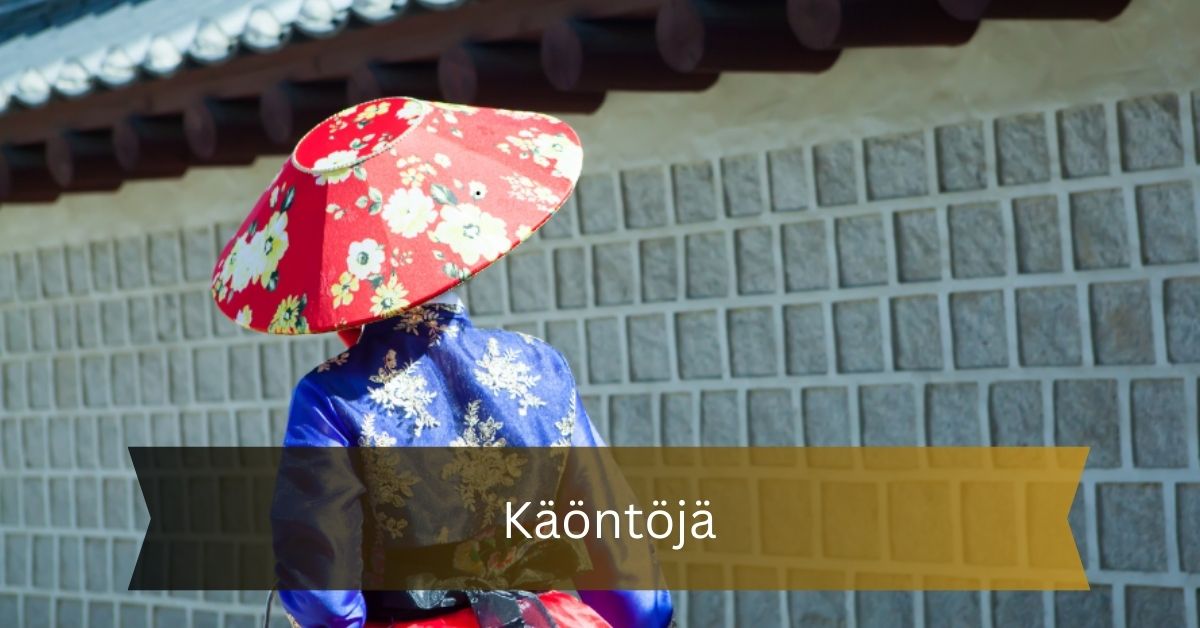
Käöntöjä, a term deeply rooted in Finnish language and culture, encapsulates the concept of change and transformation. Whether referring to a physical turn or a figurative shift, käöntöjä is integral in describing moments of transition that impact various aspects of life.
This article explores the meaning, importance, origin, and applications of käöntöjä, highlighting its role in both everyday language and cultural contexts.
What Does “Käöntöjä” Mean?
The term käöntöjä primarily denotes “turns” or “changes” and is used to describe significant moments of transition. It reflects both literal and metaphorical shifts in direction or perspective.
This concept is pivotal in understanding various forms of movement, whether it be physical, such as turning a vehicle, or figurative, like a change in life decisions or narrative developments.
Literal and Figurative Uses of Käöntöjä:
Käöntöjä is versatile in its application. Literally, it can refer to physical turns or shifts, such as navigating a path or adjusting a machine’s direction. Figuratively, it symbolizes transformative moments in personal life or storytelling, such as pivotal decisions or narrative twists.
Understanding both dimensions of käöntöjä enriches our comprehension of how changes manifest in different contexts.
Importance of Understanding Käöntöjä:
Grasping the meaning of käöntöjä is crucial for various reasons. In practical applications, whether technical or everyday, knowing how to interpret and utilize käöntöjä ensures effective communication and accurate execution of tasks.

For instance, in navigation or machinery, recognizing the significance of turns or adjustments can influence operational efficiency. In broader contexts, understanding käöntöjä helps in interpreting transitions in literature, personal growth, and other areas where change is pivotal.
Practical Applications of Käöntöjä:
In technical fields, käöntöjä might refer to adjustments or modifications needed for optimal performance. In literature or storytelling, it highlights crucial plot developments or character evolutions. By understanding käöntöjä, one can better appreciate how changes shape outcomes and influence processes.
The Origin and History of Käöntöjä:
1. Etymology of the Word Käöntöjä:
The word käöntöjä traces its origins to the Finnish verb “kääntää,” which means “to turn” or “to reverse.” The evolution from this verb to the noun käöntöjä reflects a broader concept of change and transition.
The term has been used historically to describe both physical and metaphorical turns, embodying the Finnish cultural emphasis on transformation and movement.
2. Historical Usage and Evolution:
Over time, käöntöjä has evolved from its basic meaning into a term encompassing various forms of change. This evolution mirrors the Finnish cultural appreciation for transitions and the ways in which they shape experiences.
From everyday language to cultural expressions, käöntöjä remains a vital part of how Finns understand and articulate the nature of change.
Käöntöjä in Finnish Culture:
In Finnish culture, käöntöjä represents more than just a word; it embodies a cultural understanding of change and transition. It plays a role in everyday language, literature, and media, symbolizing how transformations impact individuals and societies.
1. Cultural Significance:
The concept of käöntöjä is deeply ingrained in Finnish cultural narratives, where it often appears in storytelling and traditional expressions.
It symbolizes the acceptance and anticipation of change as an inherent part of life. Understanding käöntöjä in this cultural context provides insight into how Finns perceive and respond to changes.
2. Käöntöjä in Literature and Media:
In Finnish literature and media, käöntöjä is used to describe pivotal moments that alter the course of narratives or characters’ lives. Its presence in these domains highlights the importance of transition and the impact it has on story development and thematic exploration.
Käöntöjä in Psychological Contexts:
In psychological terms, käöntöjä can be seen as a metaphor for internal shifts and personal growth. Just as physical turns navigate a path, psychological käöntöjä represents moments of change within an individual’s mind.

These can include shifts in perspective, changes in behavior, or turning points in emotional development. For instance, a person experiencing a significant life event might undergo a käöntöjä in their self-perception or worldview.
Understanding käöntöjä in this context highlights how mental and emotional transitions impact personal identity and overall well-being. These internal shifts can lead to new ways of thinking, enhanced resilience, and a deeper understanding of oneself.
Käöntöjä in Organizational Change:
In the context of organizational change, käöntöjä plays a crucial role in how businesses and institutions adapt to new challenges and opportunities.
Organizational käöntöjä might involve restructuring, strategic pivots, or shifts in company culture. For example, a company undergoing a digital transformation might experience käöntöjä as it adjusts its processes and business model to incorporate new technologies.
Effective management of these transitions is essential for ensuring that the organization remains competitive and resilient. By understanding käöntöjä, leaders can better guide their teams through periods of change, minimizing disruption and fostering a positive environment for growth.
Käöntöjä in Education and Learning:
In educational settings, käöntöjä can refer to shifts in pedagogical approaches or curriculum changes that enhance learning experiences.
For example, a school might implement a new teaching method or technology, leading to käöntöjä in how students engage with the material. These educational shifts can significantly impact teaching effectiveness and student outcomes.
Embracing käöntöjä in education involves adapting to new learning theories, integrating innovative tools, and continuously evolving to meet the needs of students. Understanding these changes helps educators and students navigate the evolving landscape of education and optimize learning experiences.
Käöntöjä in Personal Development and Self-Improvement:
In the realm of personal development, käöntöjä refers to the conscious efforts individuals make to change and improve their lives. This could involve setting new goals, adopting healthier habits, or pursuing new skills and interests.
Personal käöntöjä often requires self-reflection and a willingness to embrace change as a path to growth. For instance, someone might decide to shift their career path or engage in self-improvement activities like mindfulness or continuing education.
By recognizing and actively managing these personal käöntöjä, individuals can achieve greater fulfillment and success in various aspects of their lives.
Käöntöjä in Historical and Cultural Shifts:
Käöntöjä also plays a significant role in understanding historical and cultural shifts. In history, major events often represent moments of käöntöjä, marking pivotal changes in societies and civilizations.
For example, the transition from feudalism to capitalism in Europe involved profound käöntöjä in economic practices, social structures, and political ideologies. Cultural shifts, such as the Renaissance or the Enlightenment, also illustrate käöntöjä as they transformed art, science, and societal values.
Studying these historical käöntöjä helps historians and cultural analysts understand how societies evolve and how significant changes shape the trajectory of human development.
Käöntöjä in Technology and Innovation:
In the realm of technology and innovation, käöntöjä refers to the transformative shifts that redefine industries and everyday life. Technological advancements, such as the rise of the internet, artificial intelligence, or renewable energy, represent significant käöntöjä that impact how we work, communicate, and interact with the world.
Each technological breakthrough brings about a new phase of development, leading to shifts in business models, consumer behaviors, and global dynamics.
Understanding these technological käöntöjä is crucial for businesses and individuals to adapt and leverage new opportunities, ensuring they stay relevant and competitive in an ever-evolving landscape.
Käöntöjä in Environmental and Ecological Changes:
Käöntöjä is also pertinent when examining environmental and ecological changes. These changes can occur on various scales, from local shifts in ecosystems to global climate transformations.

For instance, the increasing frequency of extreme weather events or shifts in biodiversity patterns are examples of environmental käöntöjä that have significant implications for ecosystems and human societies. Addressing these ecological käöntöjä requires comprehensive strategies for conservation, adaptation, and sustainability.
By understanding and responding to these changes, scientists and policymakers can work towards mitigating negative impacts and fostering environmental resilience.
Käöntöjä in Art and Creative Expression:
In the realm of art and creative expression, käöntöjä represents the innovative shifts that artists and creators employ to push boundaries and explore new concepts.
Artistic käöntöjä can involve changes in style, technique, or medium that redefine traditional approaches and create new forms of expression. For example, the transition from classical to modern art movements reflects käöntöjä in artistic vision and methodology.
These shifts in art not only influence aesthetic trends but also reflect broader cultural and societal changes. Understanding artistic käöntöjä helps in appreciating how creativity evolves and how artists respond to and shape the world around them.
Conclusion:
Käöntöjä, with its rich etymological roots and cultural significance, captures the essence of change in both literal and figurative senses. Understanding this term is essential for appreciating its role in Finnish language, culture, and various practical applications. Whether navigating physical spaces, interpreting literary works, or understanding personal transitions, käöntöjä offers a profound way to engage with the concept of change.
By exploring the multifaceted nature of käöntöjä, we gain a deeper appreciation for how transitions shape our experiences and the ways in which they are articulated in Finnish culture.